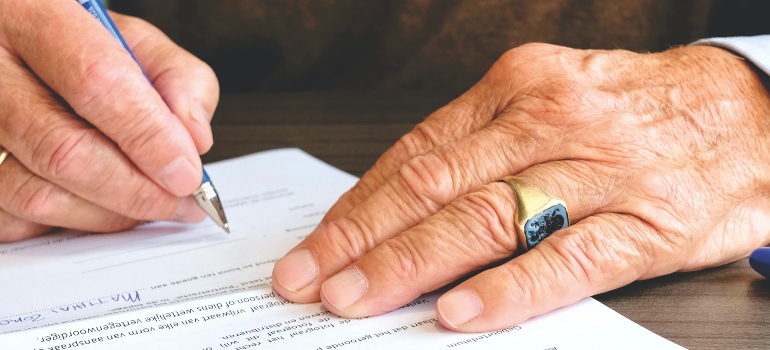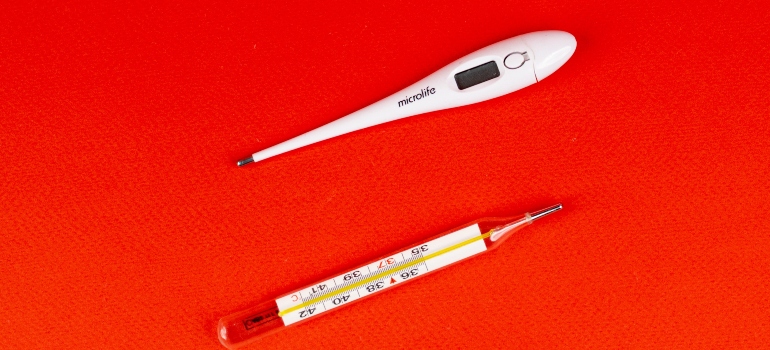Recognizing the Signs of LSD Abuse: Early Warning Signs
Are you curious to learn about the early warning signs of LSD abuse? Understanding the telltale indicators can be crucial in identifying potential substance abuse issues and intervening through substance abuse treatment Pennsylvania programs at an early stage. This article will provide you with everything you need to know about recognizing the signs of LSD abuse. It will equip you with the knowledge to support individuals who may be struggling with this psychedelic drug. We will also cover what LSD is, its history, and typical user experiences, as well as provide you with a plethora of statistics and useful information!
Jump to Section
What is LSD?
LSD, often referred to as “acid,” is a synthetic compound derived from a fungus called ergot. It is primarily consumed orally, in the form of small squares of blotting paper or gelatinous tabs infused with the drug. When ingested, LSD interacts with serotonin receptors in the brain, causing profound alterations in perception, mood, and cognition.
While LSD does not typically lead to physical dependence or withdrawal symptoms, its psychological effects can be both intense and long-lasting. Users often describe experiencing visual hallucinations, vivid colors, intensified emotions, and a distorted sense of time and self. These effects can be appealing to some, drawing them to experiment with the drug. However, prolonged or excessive LSD use can have detrimental effects on one’s mental and emotional well-being. It can lead to a loss of touch with reality, exacerbation of pre-existing mental health conditions, and the potential for enduring psychological distress. Additionally, the unpredictable nature of LSD’s effects can increase the risk of accidents, self-harm, or engaging in dangerous behaviors.

Recognizing the signs of LSD abuse is crucial in order to provide timely support in a drug rehab center Pennsylvania and offer assistance to individuals who may be struggling. Changes in behavior, such as erratic mood swings, social withdrawal, and neglect of responsibilities, can be indicators of a deeper issue. Physical manifestations, such as dilated pupils and impaired coordination, should also raise concern.
By acknowledging the importance of identifying these signs, we can contribute to a safer and healthier community. Through early intervention, individuals abusing LSD can be guided toward professional help, therapeutic interventions, and support networks that can aid in their recovery journey.
History of LSD
The history of Lysergic acid diethylamide (LSD) is a fascinating journey that spans decades and encompasses scientific discoveries, cultural movements, and profound societal impact. Let us embark on a brief exploration of the origins and evolution of LSD, a substance that has both captivated and perplexed the human mind.
LSD was first synthesized in 1938 by Swiss chemist Albert Hofmann while working at Sandoz Laboratories (now Novartis) in Basel, Switzerland. Initially, LSD-25, as it was called, was not intended for recreational use. Hofmann was conducting research on ergot alkaloids, hoping to discover new pharmaceutical applications. However, it was not until April 19, 1943, that he accidentally ingested a small amount of LSD and experienced its potent psychoactive effects.
Hofmann’s personal experimentation with LSD led to profound insights into its potential psychological and therapeutic applications. Recognizing its potential, Sandoz Laboratories began distributing LSD to medical professionals and researchers, primarily for psychiatric and psychotherapeutic purposes. In the 1950s and 1960s, LSD gained popularity within the psychiatric community as a tool for understanding mental disorders and facilitating psychotherapy.
However, LSD’s path took an unexpected turn as its use extended beyond medical circles. In the 1960s, the countercultural movements of the era, such as the Beat Generation and the Hippie movement, embraced LSD as a means of expanding consciousness, challenging societal norms, and exploring spiritual realms. The drug became synonymous with the “psychedelic experience”. It was also associated with the pursuit of enlightenment, artistic expression, and social revolution.
The backlash
The widespread use and notoriety of LSD raised concerns among authorities and triggered a backlash against the drug. Governments around the world classified LSD as a Schedule I controlled substance. This means that they restricted its availability and criminalized its possession and distribution. In other words, recognizing the signs of LSD abuse became even more important. The cultural perception of LSD shifted, with it becoming increasingly associated with danger, unpredictability, and the potential for adverse effects.

Throughout the following decades, research into LSD’s therapeutic potential largely diminished due to legal restrictions. However, recent years have seen a resurgence of interest in psychedelic substances, including LSD, within the scientific and medical communities, exacerbating the need for outpatient detox rehab PA solutions. Researchers are once again investigating the potential benefits of LSD-assisted therapy for various conditions, such as post-traumatic stress disorder (PTSD), anxiety, and depression.
Today, LSD remains an illicit substance in most countries, with limited exceptions for approved research settings. Its use continues within certain subcultures and pockets of society, often with underground manufacturing and distribution networks. However, it is crucial to note that the recreational use of LSD carries significant risks. Furthermore, it can lead to unpredictable experiences and long-lasting consequences.
How LSD affects the brain
The effects of LSD on the brain are both intricate and profound. When ingested, LSD interacts with various neurotransmitter systems, particularly serotonin. This leads to widespread changes in brain activity and alters the individual’s perception, cognition, and emotions. Let’s delve into a concise exploration of how LSD affects the brain.
LSD is a potent hallucinogen that primarily targets the serotonin 2A receptor (5-HT2A) in the brain. By binding to these receptors, LSD modulates the release of serotonin and alters the functioning of neural circuits. This interaction results in an increase in serotonin availability, leading to the characteristic psychedelic effects associated with LSD use.
One of the primary effects of LSD on the brain is the disruption of the default mode network (DMN). The DMN is a set of interconnected brain regions that are active when the mind is at rest or engaged in self-reflection. LSD diminishes the connectivity within the DMN, leading to a dissolution of boundaries between the self and the external world. This dissolution can manifest as ego dissolution, loss of a sense of self, and a feeling of interconnectedness with one’s surroundings.
LSD also affects sensory perception. Visual processing areas in the brain, such as the primary visual cortex, undergo increased activity and connectivity. This leads to visual hallucinations and intensified colors often associated with LSD use. Furthermore, LSD can influence the auditory cortex, resulting in altered auditory experiences and the perception of sounds in unique and unconventional ways.
Cognitive processes are also profoundly impacted by LSD. The prefrontal cortex, involved in decision-making, abstract thinking, and self-awareness, experiences reduced activity and connectivity under the influence of LSD. This reduction can lead to a distortion of time perception, impaired judgment, and a sense of expanded possibilities and creativity.

Typical user experiences
When individuals use Lysergic acid diethylamide (LSD), they often report a range of experiences that can be intense and transformative. Some of the typical user experiences include:
- Hallucinations
- Emotional changes
- Altered sense of self
- Enhanced creativity and abstract thinking
- Time distortion
It is important to note that individual experiences with LSD can vary greatly. Factors such as dosage, mindset, environment, and the individual’s psychological makeup can significantly influence the nature and intensity of the LSD experience. Therefore, many IOP Pennsylvania programs tailor the treatment to each individual. Additionally, while many users have positive and transformative experiences, some may also encounter challenging or difficult trips. Having a supportive environment and a trusted companion (trip sitter) can be beneficial in navigating such experiences.
Various statistics and interesting information about LSD
- LSD use tends to be more prevalent among younger age groups
- About 3.1 million people in the US, aged 12-25, say that they have used LSD.
- Around 14% of seniors have experimented with LSD at least once in their lives.
- Approximately 2.4% of adults aged 26 or older reported ever using LSD in their lifetime
- LSD use has experienced fluctuations in popularity over the years. While it gained significant attention during the counterculture movement of the 1960s and 1970s, its prevalence declined in subsequent decades.
- The prevalence of LSD use can vary across different regions and cultural contexts. Some areas may have a more significant historical association with LSD. They may also have a higher prevalence due to local factors, such as social norms, availability, and cultural influences.
- LSD use is not as widespread as cannabis, opioids, or stimulants.
Early warning signs of LSD abuse
While it may be difficult to be certain whether someone is abusing LSD or not, there are some signs that you might be able to spot. Recognizing the signs of LSD abuse involves looking through three types of warning signs:
- Behavioral
- Physical
- Psychological

Behavioral warning signs
Recognizing behavioral warning signs can be crucial in identifying potential LSD abuse or misuse. Furthermore, they may indicate whether someone needs LSD treatment or treatment at an alcohol rehab Scranton PA center. While the effects of LSD can vary from person to person, there are some common behavioral indicators to watch out for. Here are several warning signs to be mindful of:
- Sudden and extreme mood swings: Individuals abusing LSD may exhibit abrupt shifts in their mood and emotions. They may alternate between elation, euphoria, and intense happiness to agitation, anxiety, or even paranoia. These erratic mood swings can be disruptive to their daily life and relationships.
- Changes in social circles and withdrawal: Users may withdraw from their usual social circles, distancing themselves from family and friends who do not partake in drug use. Instead, they may seek out new social groups or environments that revolve around LSD or other substances.
- Neglect of responsibilities and decline in performance: A decline in academic or work performance is another warning sign of LSD abuse.
- Engaging in risky behaviors: Individuals under the influence of LSD may display a higher propensity for engaging in risky behaviors. They may participate in activities with potentially harmful consequences, such as reckless driving, unsafe sexual practices, or disregarding personal safety precautions.
- Financial difficulties: The cost of acquiring LSD and potentially neglecting financial responsibilities, such as paying bills or maintaining stable employment, can lead to financial instability.
- Neglecting previously enjoyed activities: People abusing LSD may lose interest in hobbies, sports, or activities they once enjoyed.
It is important to approach individuals showing these warning signs with empathy and understanding. Substance abuse issues are complex, and early intervention in one of the dual diagnosis treatment centers Pennsylvania can be instrumental in helping them seek appropriate support and treatment.
Physical warning signs
While the physical effects of LSD can vary among individuals, there are some common indicators to be aware of. Here are several physical warning signs to watch for:
- Dilated pupils: One of the prominent physical signs of LSD use is dilated pupils. When under the influence of LSD, the pupils can appear significantly larger than usual, even in well-lit environments. This dilation is a result of the drug’s impact on the nervous system.
- Increased heart rate: LSD can elevate heart rate and cause palpitations. If someone is abusing LSD, you may notice them experiencing a rapid or irregular heartbeat. However, it is important to note that other factors can also contribute to changes in heart rate.
- Elevated body temperature: LSD use may lead to an increase in body temperature. Users might exhibit signs of sweating or feeling warm to the touch. Monitoring for signs of abnormal or excessive sweating can help identify potential LSD misuse.
- Impaired coordination and balance: LSD can affect motor skills and coordination. Users may exhibit unsteady movements, clumsiness, or difficulty maintaining balance. This impairment can be observed in their gait, posture, or overall physical coordination.
- Changes in appetite and sleep patterns: Individuals misusing LSD may experience alterations in appetite and sleep patterns. They may have decreased appetite or irregular eating habits, leading to weight fluctuations. Sleep disturbances, such as insomnia or changes in sleep duration, can also be observed.

It is also possible that you may mistake recognizing the signs of LSD abuse for alcohol addiction. Therefore, before you send someone to treatment in an alcohol rehab center Wilkes Barre, PA, for example, make sure that they are not showing signs of LSD use instead.
Psychological warning signs
The psychological warnings signs to watch for include:
- Altered thought patterns and perception: LSD can profoundly affect an individual’s thought processes and perception. Users may report experiencing hallucinations, such as seeing or hearing things that are not present. They may describe a distorted sense of reality, with perceptions of objects and their surroundings appearing to change in shape, color, or size.
- Changes in mood and emotions: LSD can lead to unpredictable changes in mood and emotions. Users may exhibit intense and rapidly shifting emotions, ranging from euphoria and joy to anxiety, fear, or even paranoia. These emotional changes can be extreme and may disrupt their daily functioning and relationships.
- Heightened suggestibility and suggestiveness: While under the influence of LSD, individuals may become more suggestible and susceptible to the influence of others or their environment. They may be more open to adopting new beliefs, ideas, or perspectives, which can have both positive and negative consequences depending on the circumstances.
- Disrupted sense of self and identity: LSD can cause an altered sense of self or ego dissolution. Users may experience a loss of their sense of identity or individuality, feeling as if they are merging with their surroundings or experiencing a sense of unity with the universe.
- Increased introspection and introspective experiences: LSD can enhance introspection and self-reflection. Users may engage in deep contemplation about their life, purpose, and existential questions.
- Anxiety or panic reactions: While some individuals may have positive experiences with LSD, others may experience anxiety or panic reactions. The drug’s hallucinogenic effects, combined with the altered state of consciousness, can amplify existing anxieties or trigger intense feelings of fear.
By recognizing the signs of LSD abuse early, you will be able to avoid the dangers of prolonged LSD abuse.
How to address suspected LSD abuse?
Addressing suspected LSD abuse requires a compassionate and supportive approach. Here is guidance on how to handle this situation:
- Approach with empathy: Approach the individual with empathy and understanding. Avoid judgmental or confrontational attitudes, even if you want them to visit a drug rehab center Reading PA, as it may cause them to become defensive or resistant. Show that you genuinely care about their well-being and are there to offer support.
- Open communication: Initiate open and non-judgmental communication. Express your concerns in a calm and caring manner, focusing on the observed behaviors or changes that have raised suspicion. Encourage them to share their thoughts and feelings, providing a safe space for them to open up about their experiences and challenges.
- Encourage professional help: Suggest seeking professional help from therapists, counselors, or addiction treatment centers specializing in substance abuse.
- Support groups and community resources: Encourage the individual to explore support groups or community resources specific to substance abuse.
- Encourage a support network: Suggest building a supportive network around them, including trusted friends, family members, or mentors who can provide emotional support and accountability during their recovery journey.
- Maintain boundaries and self-care: It is essential to set personal boundaries and prioritize self-care when dealing with someone struggling with substance abuse.

Remember, addressing LSD abuse requires professional assistance. If the individual is resistant to seeking help or their behavior poses an immediate danger to themselves or others, it may be necessary to involve appropriate authorities or emergency services to ensure their safety. By approaching suspected LSD abuse with empathy, open communication, and guidance toward professional help, you can offer support to those in need and increase the likelihood of successful recovery.
Creating a world without LSD addiction
Recognizing the early warning signs of LSD abuse is crucial for prompt intervention and support. By staying vigilant as well as informed, we can identify potential issues and extend a helping hand to those in need. The role of support and intervention cannot be understated in addressing LSD abuse effectively. Education and awareness are paramount in preventing LSD abuse and its potential consequences. By fostering open communication within families, promoting substance abuse education, and nurturing healthy coping skills, we empower individuals to make informed choices and develop resilience against the allure of substances.
Let us prioritize prevention through knowledge, compassion, and the development of supportive networks. By working together to create a society that values education, open dialogue, and healthy coping mechanisms, we can reduce the prevalence of LSD abuse and protect individuals from its potential harm. Remember, early intervention and seeking professional help are crucial steps in addressing LSD abuse effectively. Let us strive for a future where recognizing the signs of LSD abuse, awareness, understanding, and support prevail, paving the way for healthier and more fulfilling lives.